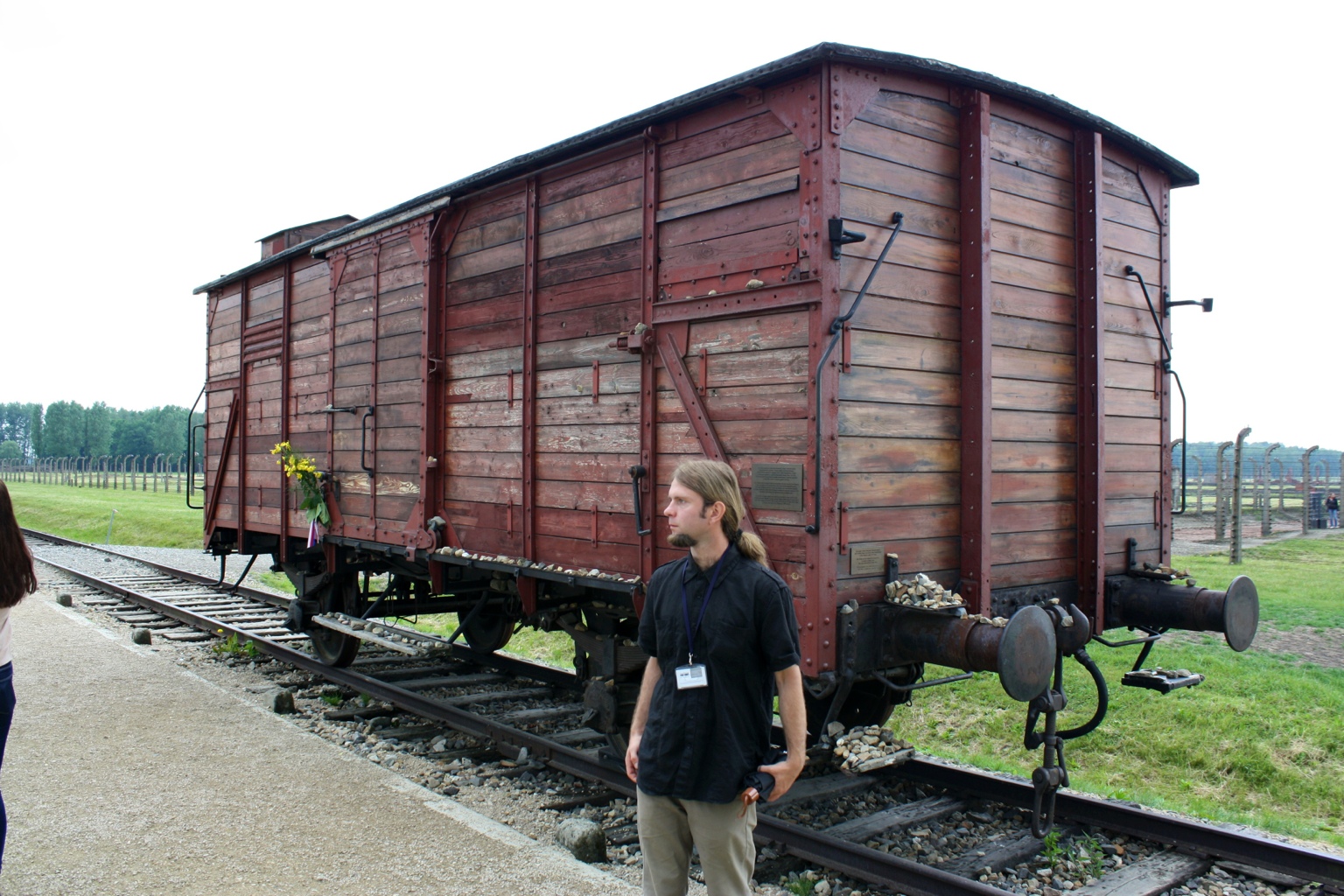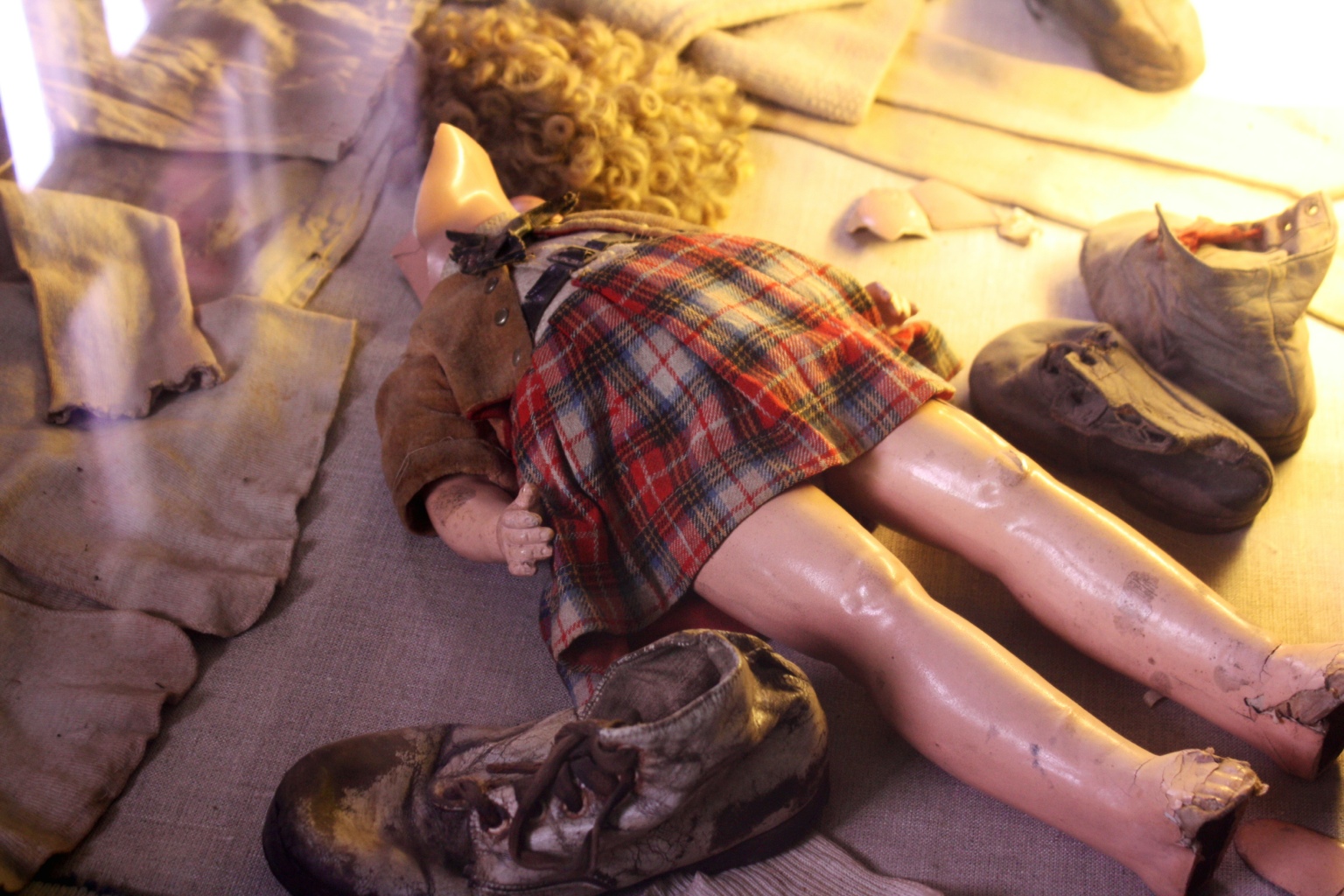Auschwitz-Birkenau Memorial and Museum
It was a very sobering experience to see Auschitz and Birkenau. No matter how many times you have seen this on TV or in movies, nothing will do the magnitude justice.
As you begin the tour, you will enter the camp beneath the famous words, “Arbeit macht frei” or “Work will set you free”. However, many people were sent directly to the gas chambers, and those who were held as prisoners were told by SS officers that the only exit was through the chimney of the crematorium.
What many people have come to know as “Auschwitz” is located in a small Polish town, Oświęcim, which is about an hour and a half bus ride from Krakow. The German name for Oświęcim is “Auschwitz” – which is what they also called the concentration camp and the subcamps in the surrounding area. To be clear, these were Nazi-operated concentration camps, not “Polish death camps”. The location was chosen for its seclusion and its easy access by rail.
After many days of being packed in wooden cattle cars with their families and no food, people would arrive at the camp. Those that survived the trip were separated into two long lines, tearing apart families; men in one and women and children in another. Men who were fit enough for hard labor were held prisoner, while others were sent directly to the gas chamber.
The small number that were held as prisoners were forced to work 11+ hour days and were fed less than 1000 calories of rotten food per day. It was rare for prisoners to live more than three months.
Those that headed directly to the gas chamber were led down a long path and told that they’d be showering. Just before, what few belongings they brought were collected and later stored in massive warehouses in an area of the camp called “Canada”. The SS soldiers at the camp readily took anything they saw fit, everything else was sent back to Germany to supply troops and citizens.
Old bunkers were converted into gas chambers that held 2000 crammed people. Each gas chamber was packed full of people, which generated enough heat to activate the poisoning agent that was dropped from above (picture below). Canisters of Zyklon B were dropped into the chamber, where the heat activated a chemical reaction producing Cyanide. Within 20 minutes, everyone in the chamber had died.
After the 20 minutes had passed, prisoners were forced to clear the bodies from the gas chamber and take them to the crematorium.
Since the two gas chambers located at the Auschwitz 1 were not enough to keep pace, four more were built on a nearby site, called Birkenau (or Auschwitz 2). This camp is much larger and has many more barracks for the prisoners that suffered there.
In the brick barracks of Birkenau, there are bunks throughout the building which housed up to 700 people each. The bottom bunk was simply the ground and sometimes had straw laid. The two bunks above it were built of wooden planks. Each level had approximately 5 people crammed in it.
When all those barracks were full, horse stables were converted in to more barracks, housing up to 400 people each. Today, much of the wood is gone, as it was used to rebuild houses in the area after the war.
At the end of the train tracks inside Birkenau, there now stands a monument that was built as a memorial of those who died.
The story of Auschwitz is incredibly sad and overpowering. However, it’s an important story that needs to be remembered and told for generations.
Visitor Notes
We purchased a round-trip bus ticket to Oświęcim from Krakow Globny (main bus station) for around 25 PLN each. One way takes about 1.5 hours, so it would be best to leave as early in the day as possible.
As you enter the museum you will notice herds of people waiting to purchase tickets. However, head off to the ticket booth on the right (with a much shorter line) and you can purchase a guided tour for 40 PLN per person.
The Guided tours at from 10 am – 3 pm, with various start times in English, Polish, German, and French. The total tour time was 3.5 hours. We were able to catch busses and shuttles right away for each of the legs of the trip, causing the entire trip from Krakow to take us eight hours. We grabbed a quick lunch at a food stand outside the museum for 20 PLN, pricey by Polish standards.















This place is sickening! But you are right – we all need to know and remember…
When I was volunteering in Germany, I was looking to understand how Germans feel about the WWII and the holocaust. Nazis clearly did horrible things, but at the same time they also had a lot of support from the population (not from everyone, but from some for sure). So I wanted to know how – 60 years later – these topics are discussed at school and at home. And as it turns out, my friends’ grandparents wouldn’t even talk about what happened. This is how ashamed they were for being a part of it – directly or indirectly.
This was very new to me because my grandfather was a Soviet soldier and he would always share war stories at the dinner table. We learned about the war through his memories.